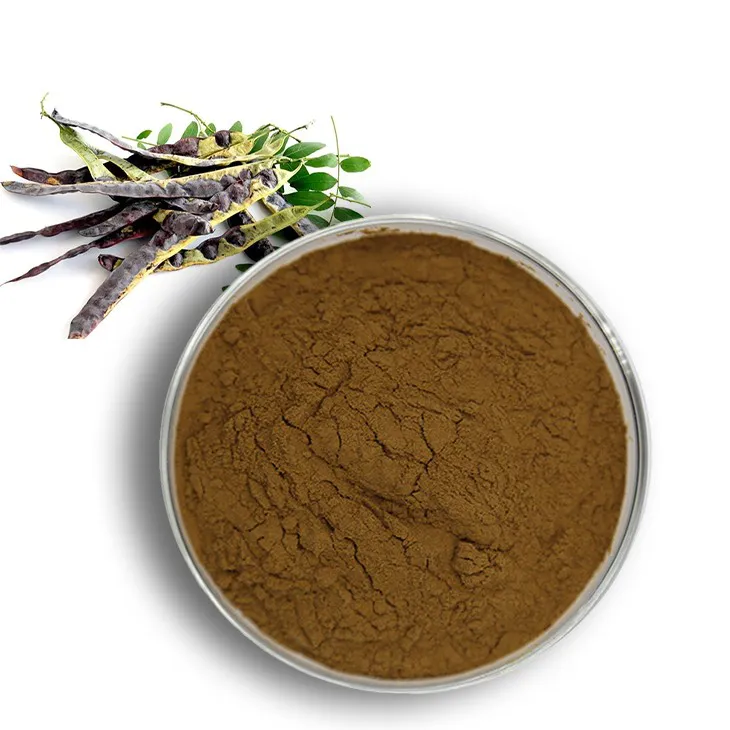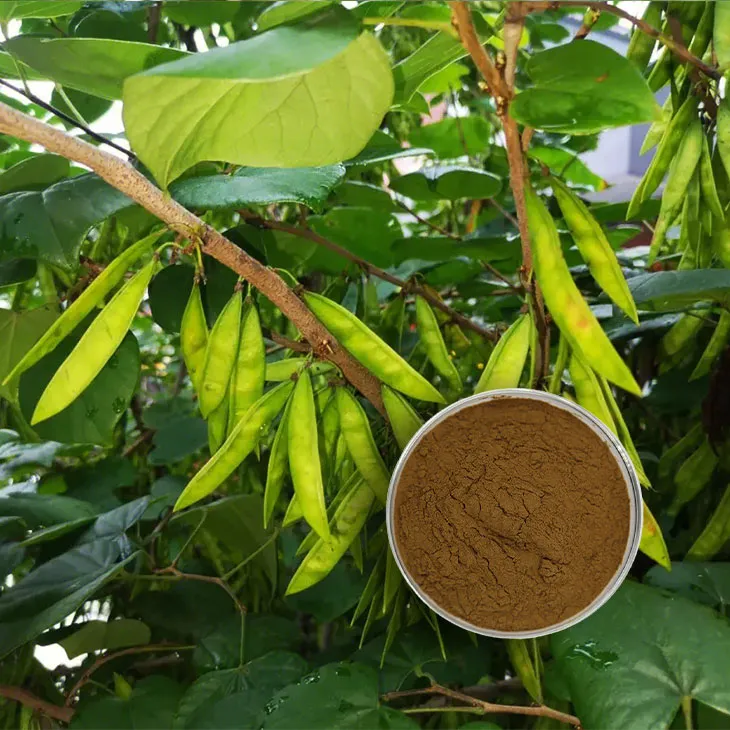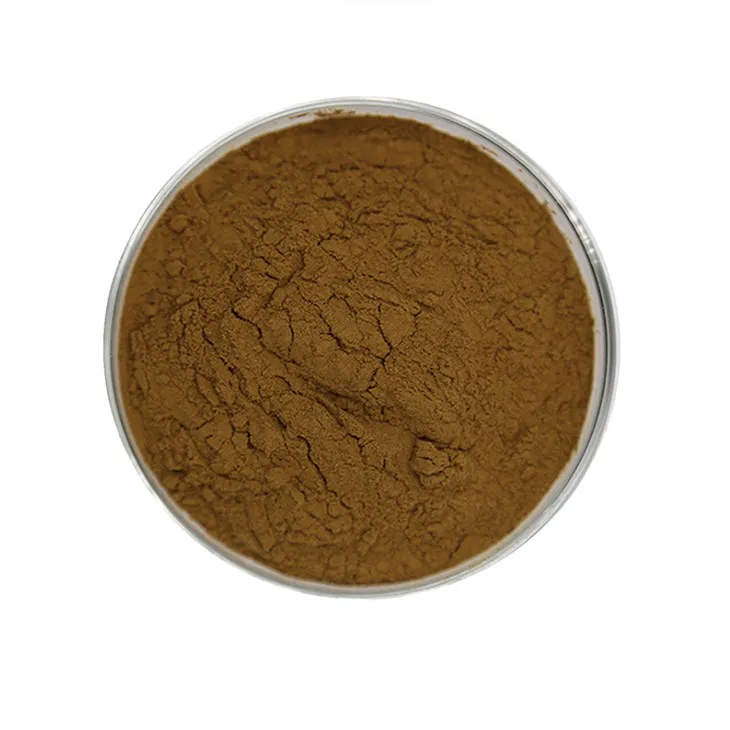- 0086-571-85302990
- sales@greenskybio.com
The pure saponin extract most worthy of purchase.
2024-11-27

1. Introduction
Pure Saponin Extracts have been gaining increasing attention in recent years due to their potential applications in various fields. Saponins are a class of natural compounds that can be found in many plants. They possess unique chemical structures and properties, which make them valuable for medicinal, cosmetic, and other purposes. However, the market is filled with a wide range of Saponin Extracts, and it is crucial to identify the ones that are truly of high quality and worth purchasing.

2. Understanding Saponin Extracts
Saponins are glycosides with a steroid or triterpenoid aglycone. They are characterized by their ability to form a soapy lather when dissolved in water, which is where their name comes from (derived from the Latin word "sapo" meaning soap). Saponin extracts can be obtained from different plant sources such as ginseng, licorice, and quinoa.
2.1 Chemical Structure
The chemical structure of saponins plays a significant role in determining their properties and functions. The aglycone part of the saponin molecule can vary in structure, which leads to different biological activities. For example, some saponins with specific aglycone structures may have anti - inflammatory properties, while others may be more effective in antioxidant activities.
2.2 Sources of Saponin Extracts
As mentioned earlier, saponin extracts can be sourced from various plants.
- Ginseng: Ginseng is a well - known plant in traditional medicine. It contains a variety of saponins known as ginsenosides. These ginsenosides are believed to have adaptogenic properties, which can help the body adapt to stress and enhance overall well - being.
- Licorice: Licorice root is another rich source of saponins. The saponins in licorice, particularly glycyrrhizin, have been studied for their anti - inflammatory, antiviral, and hepatoprotective effects.
- Quinoa: Quinoa is not only a popular superfood but also a source of saponins. Quinoa saponins are mainly found in the outer layer of the seeds and have been shown to have potential health - promoting effects.

3. Purity Levels of Saponin Extracts
Purity is one of the most important factors to consider when purchasing pure saponin extracts. High - purity saponin extracts are more likely to deliver the expected benefits without unwanted side effects or contaminants.
3.1 Measuring Purity
Purity can be measured through various analytical techniques.
- High - Performance Liquid Chromatography (HPLC): HPLC is a commonly used method to analyze the purity of saponin extracts. It can separate and quantify the different components in the extract, allowing for accurate determination of the saponin content and purity.
- Gas Chromatography - Mass Spectrometry (GC - MS): This technique is also useful for analyzing saponin extracts, especially for volatile components. It can provide detailed information about the chemical composition of the extract, which is helpful in assessing purity.
3.2 Importance of High Purity
High - purity saponin extracts are important for several reasons.
- Effectiveness: Pure saponin extracts are more likely to be effective in their intended applications. For example, if you are using a saponin extract for its antioxidant properties, a higher - purity extract will contain a greater concentration of the active saponin components responsible for antioxidant activity.
- Safety: Lower - purity extracts may contain impurities such as heavy metals, pesticides, or other contaminants. These impurities can pose risks to human health. High - purity saponin extracts are less likely to have such contaminants, ensuring a safer product.

4. Quality Control in Production
Quality control during the production of saponin extracts is essential to ensure the final product's quality.
4.1 Raw Material Selection
The quality of the raw materials used in saponin extraction is crucial.
- Source Verification: Manufacturers should ensure that the plant sources of saponins are of high quality. This includes verifying the origin of the plants, ensuring they are grown in suitable environments, and free from diseases and pests.
- Harvesting Time: The timing of harvesting can also affect the quality of saponins. For example, harvesting plants at the optimal time can ensure a higher content of active saponin components.
4.2 Extraction Process
The extraction process used to obtain saponin extracts can significantly impact the quality of the final product.
- Solvent Selection: The choice of solvent for extraction is important. Different solvents may have different extraction efficiencies and selectivity for saponins. For example, some solvents may be more effective in extracting specific types of saponins while leaving behind unwanted components.
- Extraction Conditions: Parameters such as temperature, pressure, and extraction time need to be carefully controlled. Incorrect extraction conditions can lead to degradation of saponins or extraction of unwanted substances.
4.3 Purification and Concentration
After extraction, the saponin - rich extract usually needs to be purified and concentrated.
- Purification Methods: There are various purification methods available, such as filtration, chromatography, and crystallization. These methods are used to remove impurities and obtain a purer saponin extract.
- Concentration: Concentration of the saponin extract is also an important step. It helps to increase the concentration of active saponin components in the final product, making it more effective.
4.4 Quality Testing
Quality testing should be carried out at various stages of production.
- In - process Testing: This includes testing during the extraction, purification, and concentration processes to ensure that the product is being produced according to the desired quality standards.
- Final Product Testing: Before the saponin extract is packaged and sold, it should undergo comprehensive final product testing. This includes testing for purity, potency, and safety.

5. Comparing the Effectiveness of Saponin Extracts
The effectiveness of saponin extracts can vary depending on several factors, including the type of saponin, its purity, and the application.
5.1 Medicinal Applications
In the field of medicine, saponin extracts have shown potential in various areas.
- Anti - inflammatory Effects: Some saponin extracts, such as those from licorice, have been studied for their anti - inflammatory properties. They may act by inhibiting the production of inflammatory mediators or by modulating the immune response.
- Antioxidant Activity: Saponin extracts can also exhibit antioxidant activity, which is beneficial for protecting cells from oxidative damage. This can be important in preventing chronic diseases such as cancer, cardiovascular diseases, and neurodegenerative diseases.
- Immunomodulatory Effects: Certain saponins can modulate the immune system, either by enhancing or suppressing immune responses. This can be useful in treating immune - related disorders or in developing immunotherapies.
5.2 Cosmetic Applications
Saponin extracts are also finding applications in the cosmetic industry.
- Skin - Whitening Effects: Some saponin extracts may have skin - whitening properties, which can be achieved by inhibiting the production of melanin in the skin. This makes them potentially useful in cosmetic products for skin lightening.
- Anti - aging Effects: Saponins can also have anti - aging effects by promoting collagen production in the skin, reducing wrinkles, and improving skin elasticity.
- Hair - Care Benefits: In hair - care products, saponin extracts can be used to improve hair strength, shine, and reduce hair loss.
5.3 Other Applications
Besides medicinal and cosmetic applications, saponin extracts have other potential uses.
- Food Additives: Saponins can be used as food additives, for example, as emulsifiers or foaming agents. They can improve the texture and stability of food products.
- Agricultural Applications: In agriculture, saponin extracts can be used as natural pesticides or plant growth regulators.
6. How to Choose the Most Worthwhile Saponin Extracts
Based on the above considerations, here are some tips for choosing the most worthwhile saponin extracts.
6.1 Research the Manufacturer
- Look for manufacturers with a good reputation. Check for customer reviews and testimonials. A well - established manufacturer is more likely to have strict quality control measures in place.
- Find out about the manufacturer's production processes. Ensure that they follow good manufacturing practices (GMP) and have proper quality assurance systems.
6.2 Check the Product Label
- The product label should provide information about the purity of the saponin extract. Look for labels that clearly state the percentage of saponin content.
- Check for any additional ingredients. Make sure that there are no unwanted additives or allergens in the product.
6.3 Consider the Source of Saponin
- Different sources of saponin may have different properties. For example, if you are looking for anti - inflammatory effects, you may want to choose a saponin extract from licorice.
- Ensure that the source of the saponin is sustainable and of high quality.
6.4 Evaluate the Price - Quality Ratio
- Don't simply choose the cheapest product. Consider the quality of the saponin extract in relation to its price. A higher - quality product may be more expensive but may offer better value in terms of effectiveness and safety.
- Compare prices among different brands and products to find the best price - quality ratio.
7. Conclusion
In conclusion, when looking for the pure saponin extract most worthy of purchase, it is essential to consider factors such as purity levels, quality control in production, and effectiveness. By carefully evaluating these aspects and following the tips provided, consumers can make more informed decisions and choose saponin extracts that are of high quality and suitable for their specific needs. Whether for medicinal, cosmetic, or other purposes, high - quality saponin extracts can offer a range of potential benefits.
FAQ:
Question 1: How can one determine the purity level of a pure saponin extract?
There are several ways to determine the purity level of a pure saponin extract. One common method is through laboratory analysis such as high - performance liquid chromatography (HPLC). HPLC can separate and quantify the different components in the extract, allowing for the determination of the percentage of saponin present. Another way is to look at the product's specifications provided by the manufacturer. Reputable manufacturers usually conduct their own purity tests and will disclose this information. Additionally, third - party testing and certification can also be an indicator of high purity.
Question 2: What are the key factors in quality control during the production of pure saponin extracts?
The key factors in quality control during the production of pure saponin extracts include the quality of the raw materials. High - quality raw materials ensure a better starting point for extraction. The extraction process itself is crucial, as it should be optimized to extract the maximum amount of saponin while minimizing impurities. This may involve using appropriate solvents and extraction techniques. Monitoring and controlling the temperature, pressure, and time during extraction are also important. After extraction, purification steps are necessary to further remove any remaining impurities. Quality control also extends to packaging, where proper packaging materials should be used to protect the extract from degradation due to factors such as light, moisture, and air.
Question 3: How do different pure saponin extracts compare in terms of effectiveness for medicinal use?
Different pure saponin extracts can vary significantly in terms of effectiveness for medicinal use. The chemical composition of saponins can differ depending on the plant source. For example, saponins from ginseng may have different medicinal properties compared to those from soapwort. The bioavailability of the saponin extract also plays a role. Some extracts may be more easily absorbed by the body, leading to greater effectiveness. Clinical studies are often the best way to compare the effectiveness of different saponin extracts for specific medicinal purposes. These studies can measure parameters such as the impact on disease symptoms, the body's physiological response, and any potential side effects.
Question 4: Are there any specific tests to check the quality of pure saponin extracts for cosmetic use?
Yes, there are specific tests for checking the quality of pure saponin extracts for cosmetic use. Skin compatibility tests are essential to ensure that the extract does not cause irritation or allergic reactions. This can be done through in - vitro tests using skin cell cultures or in - vivo tests on human volunteers. Microbiological tests are also crucial to check for the presence of harmful bacteria, fungi, or other microorganisms. Additionally, tests for stability under different storage conditions (such as temperature and humidity) are necessary to ensure that the saponin extract maintains its properties over time. Chemical analysis to confirm the presence and concentration of saponin, as well as the absence of harmful impurities, is also an important part of quality assessment for cosmetic - use saponin extracts.
Question 5: How can consumers ensure they are buying a reliable pure saponin extract?
Consumers can ensure they are buying a reliable pure saponin extract by doing several things. Firstly, research the brand and manufacturer. Look for companies with a good reputation in the industry, positive customer reviews, and a history of producing high - quality products. Check if the manufacturer follows good manufacturing practices (GMP). Secondly, look for products that have been third - party tested and certified. This provides an additional level of assurance. Thirdly, carefully read the product label. It should clearly state the source of the saponin, the purity level (if available), and any other relevant information such as recommended usage and potential side effects. Finally, compare prices. If a product seems too cheap compared to others on the market, it may be of lower quality.
Related literature
- Purity Analysis of Saponin Extracts: New Methodologies"
- "Quality Control in Saponin Extract Production: Best Practices"
- "Comparative Efficacy of Different Saponin Extracts in Medicinal Applications"
- "Quality Assessment of Saponin Extracts for Cosmetic Use"
- ▶ Hesperidin
- ▶ Citrus Bioflavonoids
- ▶ Plant Extract
- ▶ lycopene
- ▶ Diosmin
- ▶ Grape seed extract
- ▶ Sea buckthorn Juice Powder
- ▶ Fruit Juice Powder
- ▶ Hops Extract
- ▶ Artichoke Extract
- ▶ Mushroom extract
- ▶ Astaxanthin
- ▶ Green Tea Extract
- ▶ Curcumin
- ▶ Horse Chestnut Extract
- ▶ Other Product
- ▶ Boswellia Serrata Extract
- ▶ Resveratrol
- ▶ Marigold Extract
- ▶ Grape Leaf Extract
- ▶ New Product
- ▶ Aminolevulinic acid
- ▶ Cranberry Extract
- ▶ Red Yeast Rice
- ▶ Red Wine Extract
-
Propolis Extract Powder
2024-11-27
-
White Peony Extract
2024-11-27
-
Honeysuckle Pollen
2024-11-27
-
Curcuma Longa Extract
2024-11-27
-
Saffron Extract Powder
2024-11-27
-
Artichoke Extract
2024-11-27
-
Apricot Powder
2024-11-27
-
Quercetin
2024-11-27
-
Centella Asiatica Extract
2024-11-27
-
Baicalin
2024-11-27





















